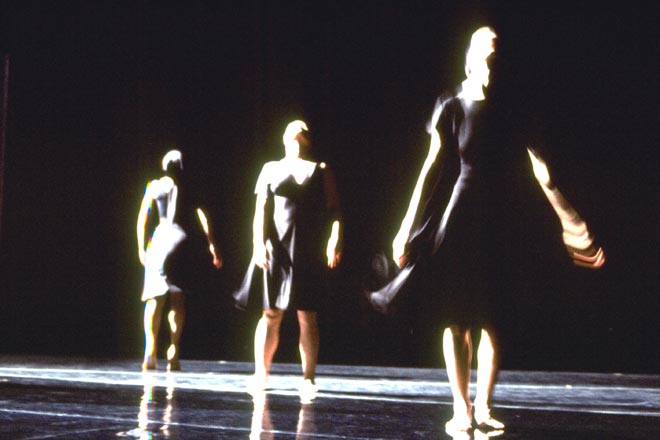If there were no possibility of knowing what we look like, would we succeed in recognizing ourselves? In “Poor Reality,” ChameckiLerner explores how the activity of gazing into our own reflection inflicts upon us simultaneous pleasure and pain. When confronted with our own image, do we accept or deny what we see? Furthermore, are we what is reflected in the mirror, or are we what is reflected in other people’s eyes?
The four dancers, identical in appearance, share the urge to become one another, in a skewed attempt to fulfill their need for self-definition. Failing to recognize that each is merely the other’s reflection, there is an irony in their quest to become someone to whom they are identical. The audience bears witness to this anonymous yet intimate struggle to find comfort and familiarity inside someone else’s skin.
Hanging Plexiglas panels and a reflective floor create a mysterious and intricate maze through which the dancers must find their way. Infinitely reflected images bounce back and forth and refuse to solidify into one. These various reflections betray the dancers, and they are ultimately unable to differentiate between self, other, and image. Their success or failure at recognizing their own projected image hinges upon whether they can resolve the tension between who they feel they are and how they see themselves. It remains impossible to say whether their success or failure will bring fulfillment or isolation.
The world of Ms. Lerner anad Ms. Chamecki plunge the viewer into is as hermetic and intensely emotional as ever. Jennifer Dunning, The New York Times
By simply being true to their own artistic desires, they (chameckilerner) have created a language of movement that speaks directly to a generation looking for new forms of identification. Alessandro Magania, V Magazine







